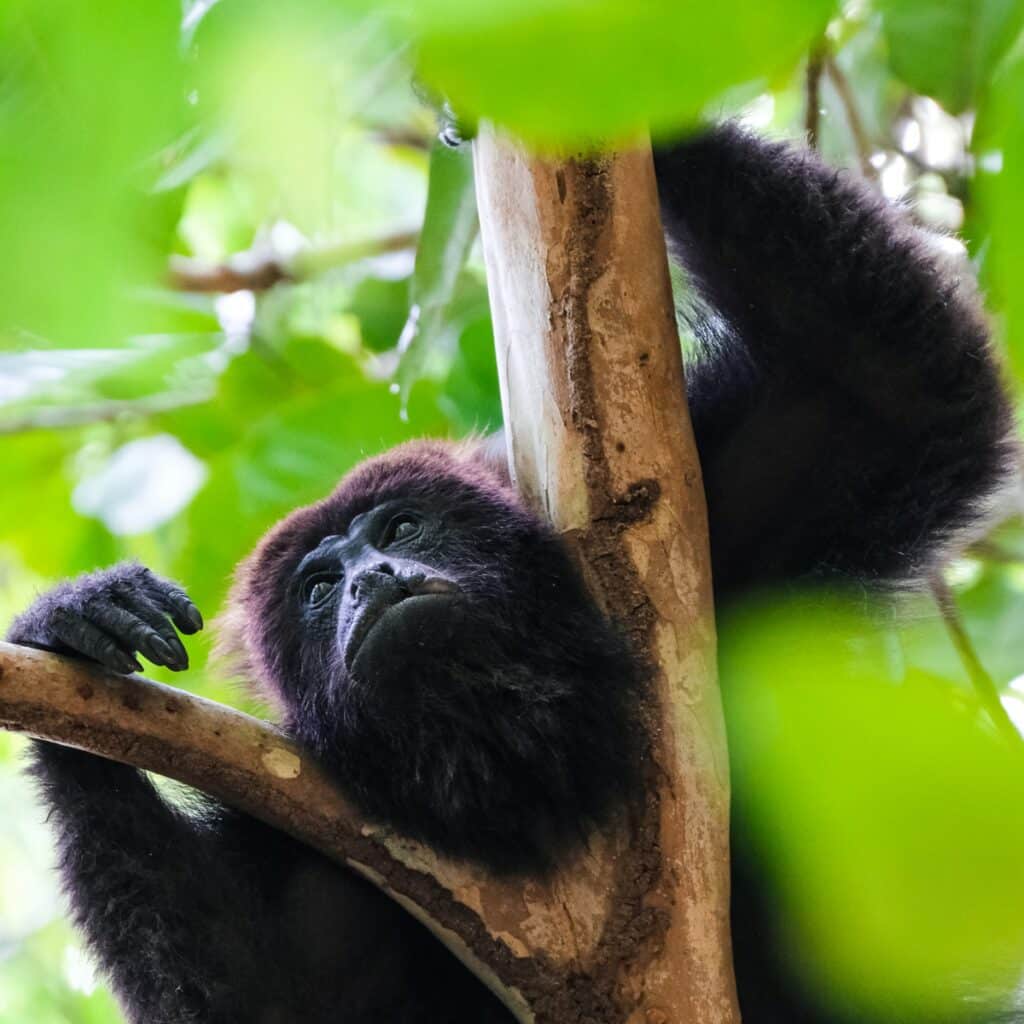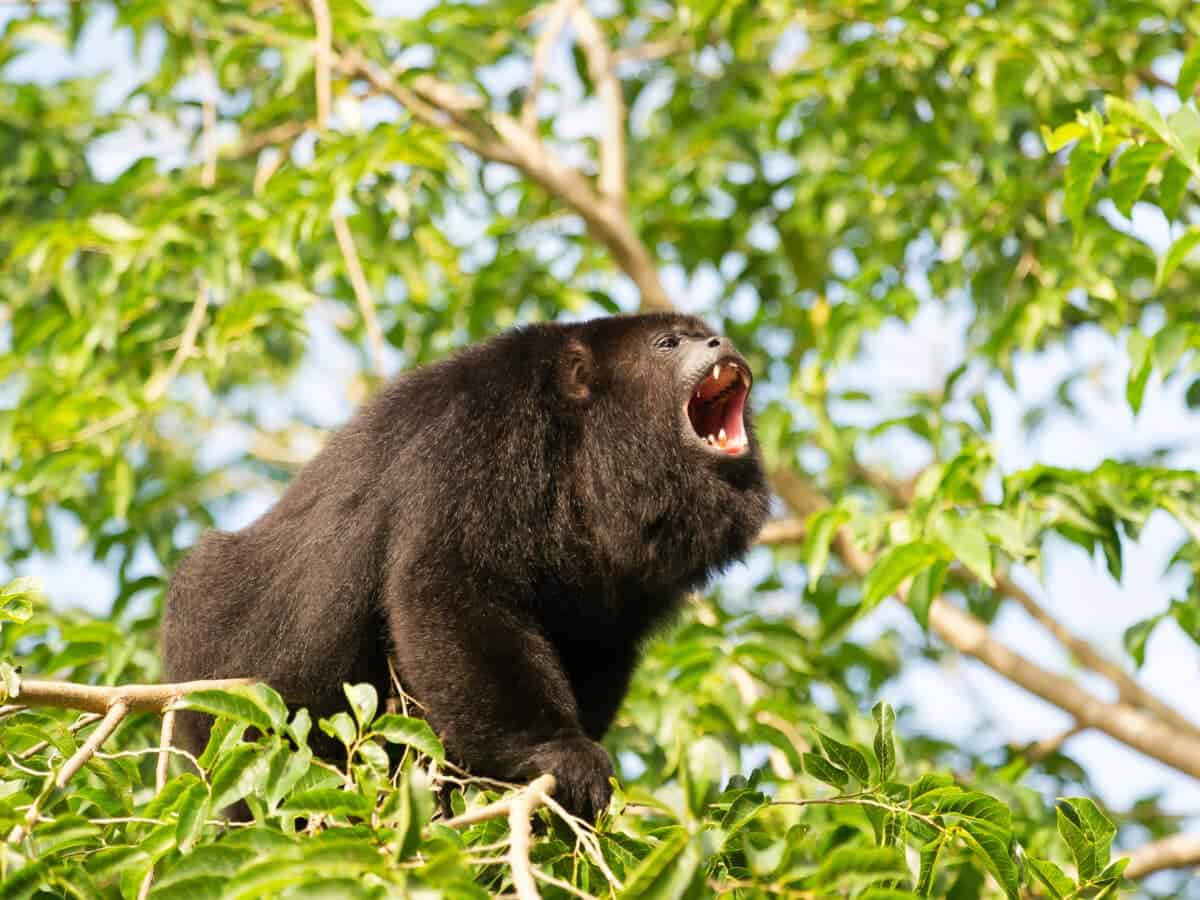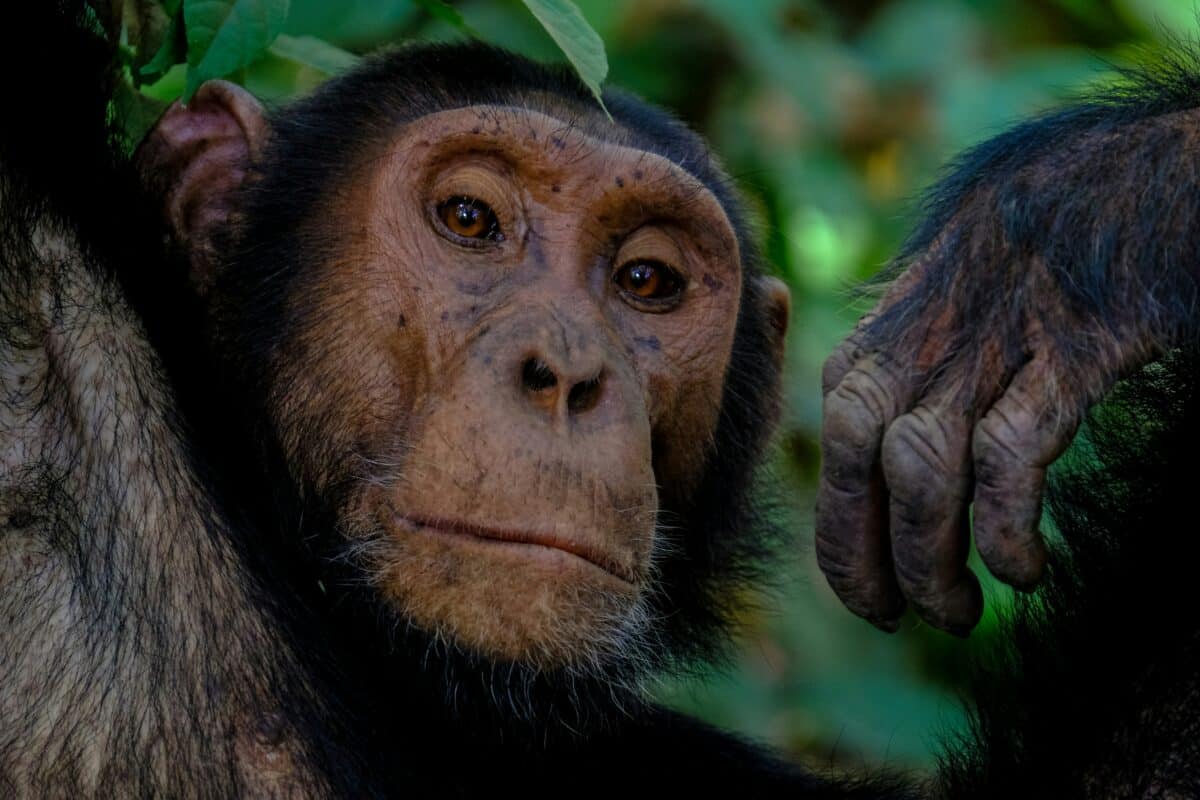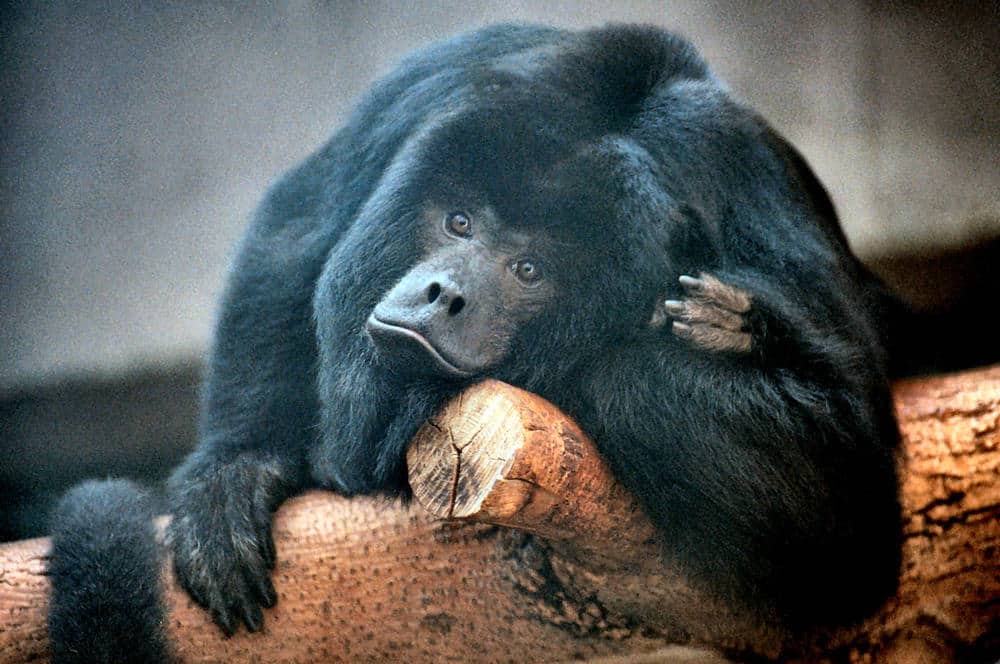Howler monkeys, the vocal champions of the rainforest, are among the most fascinating primates on our planet. These remarkable creatures have captivated scientists and nature enthusiasts alike with their extraordinary adaptations and behaviors. Named for their distinctive howls that can travel up to three miles through dense forest, these New World monkeys hold many secrets that might surprise even the most dedicated wildlife aficionados. From their unique anatomical features to their complex social structures, howler monkeys represent one of nature’s most intriguing evolutionary success stories. In this article, we’ll explore fifteen surprising facts about these vocal primates that demonstrate why they deserve our attention and conservation efforts.
The Loudest Land Animal on Earth

Howler monkeys hold the impressive title of being the loudest land animals on the planet. Their calls can reach up to 140 decibels—louder than a rock concert and nearly as loud as a gunshot. This remarkable volume is comparable to standing near a jet engine during takeoff. Scientists have measured their calls traveling up to three miles through dense forest, making them audible from extraordinary distances.
The secret behind their vocal power lies in their specialized anatomy. Howler monkeys possess an enlarged hyoid bone in their throat that acts as a resonating chamber, amplifying their calls to these incredible volumes. This adaptation gives them a significant advantage in territorial communication, allowing groups to establish boundaries without direct confrontation with neighboring troops. Males typically vocalize more frequently than females, particularly at dawn and dusk, creating the iconic soundtrack of Central and South American rainforests.
Their Tails Function as a Fifth Limb

Howler monkeys belong to the group of New World monkeys known as “prehensile-tailed” primates. Their remarkable tails function effectively as a fifth limb, equipped with specialized adaptations that enable incredible dexterity and strength. The underside of their tail tip has a sensitive bare patch with fingerprint-like ridges that provide enhanced grip and tactile sensitivity, similar to human fingertips. This adaptation allows them to grasp branches securely and perform delicate manipulations.
These prehensile tails can support the monkey’s entire body weight, allowing them to hang suspended while using both hands and feet for feeding or social interactions. Young howlers often hang by their tails while playing, developing crucial motor skills and strength. Remarkably, they can even use their tails to retrieve food that would otherwise be out of reach, demonstrating problem-solving abilities and tool-like usage of this specialized appendage. This adaptation is crucial for their arboreal lifestyle, allowing them to navigate the three-dimensional environment of the forest canopy with remarkable efficiency.
They Rarely Leave the Trees

Howler monkeys are among the most committed arboreal mammals on the planet, spending approximately 99% of their lives in the forest canopy. Unlike many primates that regularly descend to the forest floor, howlers rarely leave the safety of the trees. This extreme arboreal lifestyle has shaped their evolution, resulting in specialized adaptations for life among the branches. Their reluctance to come to the ground stems partly from their relatively slow movement, which would make them vulnerable to predators in open spaces.
This tree-dwelling commitment influences every aspect of their behavior—from feeding to reproduction and social interactions. Howlers obtain nearly all their water from the foods they eat or from reservoirs that collect in tree hollows and epiphytic plants. When they must cross gaps between trees that are too large to jump, they may form living bridges with their bodies, demonstrating remarkable cooperation. This extreme specialization makes them particularly vulnerable to deforestation, as they cannot easily traverse large cleared areas to reach new forest fragments, limiting their ability to adapt to human-modified landscapes.
Their Diet Makes Them Incredibly Lazy

Howler monkeys have evolved one of the most energy-efficient lifestyles among primates, directly related to their leaf-heavy diet. Their primary food source—mature leaves—provides relatively little nutritional value and contains compounds that are difficult to digest. To cope with this challenging diet, howlers have developed specialized adaptations, including an enlarged cecum (part of the large intestine) that houses symbiotic bacteria capable of breaking down cellulose and neutralizing plant toxins. Despite these adaptations, leaves still provide limited energy.
As a result, howler monkeys have adopted an extraordinarily sedentary lifestyle, spending up to 80% of their waking hours resting. They typically move less than 700 meters per day, conserving as much energy as possible. When not feeding or socializing, they can often be observed lounging motionless in the canopy for hours. This energy conservation strategy represents an evolutionary compromise that allows them to survive on a widely available but low-quality food source. Their “lazy” reputation is actually an ingenious adaptation that turns a dietary limitation into a successful survival strategy.
They Have Extraordinary Color Vision

Unlike many mammals that have limited color perception, howler monkeys possess remarkable trichromatic color vision similar to humans. What makes this particularly fascinating is that they are the only New World monkeys where both males and females consistently have this advanced visual capability. This exceptional color vision results from having three different types of cone cells in their retinas, each sensitive to different wavelengths of light—specifically red, green, and blue. This adaptation allows them to distinguish between subtle variations in leaf coloration, helping them identify younger, more nutritious leaves from mature ones.
Research has shown that howler monkeys’ color vision likely evolved in response to their predominantly folivorous diet. Young leaves contain fewer toxic compounds and more protein than mature leaves, but the visual differences can be subtle. Their trichromatic vision provides a competitive advantage in food selection, allowing them to efficiently identify the most nutritious options available. Additionally, this visual acuity helps in social communication, as howler monkeys can better perceive subtle color signals in facial expressions and body language of group members, enhancing their complex social interactions in the dense forest canopy.
They Have a Unique Social Structure

Howler monkey social organization varies remarkably between species, displaying some of the most flexible social structures among primates. Most species live in groups ranging from 5 to 20 individuals, though group composition can differ significantly. Some species, like the mantled howler (Alouatta palliata), form multi-male/multi-female groups with complex hierarchies, while others, like the red howler (Alouatta seniculus), typically maintain a single dominant male with multiple females. This variability makes them valuable subjects for studying the evolution of primate social systems.
What’s particularly unique is how howler groups maintain territorial boundaries primarily through vocal displays rather than physical confrontations. Males from neighboring groups engage in coordinated howling contests, often at dawn, which can last for over an hour. These acoustic battles establish dominance without the risks associated with physical fighting. Additionally, both male and female howlers may leave their birth groups upon reaching maturity—a pattern called bisexual dispersal that is relatively uncommon among primates. This characteristic reduces inbreeding and promotes genetic diversity across populations, contributing to their evolutionary success across diverse habitats.
They Are Professional Leaf Eaters

Howler monkeys are classified as folivores, with leaves constituting up to 70% of their diet—making them among the most leaf-dependent of all primates. Their specialized digestive system represents an evolutionary marvel that allows them to extract nutrients from this challenging food source. Unlike most mammals, howler monkeys possess a compartmentalized stomach and an enlarged cecum that hosts specialized microorganisms. These microbes break down cellulose and detoxify the chemical compounds that plants produce to discourage consumption.
Their dental structure further reflects their leaf-eating specialization, with distinctive shearing crests on their molar teeth that efficiently slice through tough leaf material. Despite their leaf-focused diet, howlers are actually selective folivores, carefully choosing specific tree species and preferring younger leaves with higher protein content and fewer toxins. They supplement their leaf consumption with fruits, flowers, and even some insects when available, adjusting their dietary balance seasonally as different resources become abundant. This dietary flexibility, combined with their specialized digestive adaptations, allows howler monkeys to thrive in habitats where other primates might struggle to find sufficient nutrition.
They Have Significant Sexual Dimorphism

Howler monkeys exhibit pronounced sexual dimorphism, with males and females displaying notable differences in physical characteristics. Depending on the species, males can weigh between 1.5 to 2 times more than females, with average weights ranging from 7-9 kg for males compared to 4-7 kg for females. This size difference is accompanied by distinct secondary sexual characteristics. Male howlers typically have larger hyoid bones, the specialized throat structure that enables their powerful vocalizations, allowing them to produce deeper and louder calls than females.
Beyond size differences, male and female howler monkeys often display distinct coloration. In species like the mantled howler (Alouatta palliata), males develop a striking black coat while females retain a brownish hue. In the black howler (Alouatta caraya), the contrast is even more dramatic—adult males are completely black while females are predominantly blonde or yellow-brown. This remarkable color difference makes them one of the most sexually dichromatic mammals. These distinctive traits evolved primarily through sexual selection, as males compete for mating opportunities, with larger size and more impressive vocalizations potentially signaling genetic fitness to potential mates.
Their Population Dynamics Are Influenced by Natural Disasters

Howler monkey populations demonstrate remarkable resilience and vulnerability to natural disasters, with their responses providing valuable insights into ecological recovery processes. Hurricane impacts, in particular, have been extensively studied in Central American howler populations. These powerful storms can cause immediate population declines of up to 50% through direct mortality and the destruction of food sources. Following Hurricane Iris in Belize in 2001, researchers documented how surviving black howler monkeys (Alouatta pigra) altered their behavior significantly, spending more time foraging and consuming different plant species than before the disaster.
Disease outbreaks represent another natural challenge for howler populations. Yellow fever epidemics have caused catastrophic mortality rates among howler monkeys, particularly in South America. These primates are exceptionally susceptible to the virus, often serving as sentinel species that alert public health officials to outbreaks before human cases appear. While these disasters can devastate local populations, howler monkeys demonstrate impressive recovery capabilities when habitat remains intact. Their relatively rapid reproductive rate (females can give birth annually) and ability to adapt their feeding strategies allow populations to rebound over time, though recovery may take decades in severely affected areas.
They Have an Unusual Reproductive Cycle

Female howler monkeys display a reproductive cycle with several unusual characteristics compared to other primates. Unlike many monkey species that show visible signs of estrus (such as pronounced swelling), female howlers exhibit subtle behavioral changes that only experienced observers might notice. They typically give birth to a single offspring after a gestation period of approximately 180-190 days, depending on the species. What’s particularly interesting is their lack of birth seasonality in many populations—howler monkeys can reproduce year-round, with births occurring in any month, though some populations show slight seasonal preferences correlating with food availability.
Perhaps most remarkable is their rapid return to fertility after giving birth. Female howlers can resume cycling within 2-3 months postpartum, even while still nursing their previous offspring. This reproductive efficiency contributes to their resilience following population declines. Infant development follows an interesting pattern as well—young howlers begin sampling solid foods at about 3 months of age but continue nursing for up to 18 months in some cases. During this extended dependency period, infants gradually gain independence while still benefiting from maternal protection. This reproductive strategy balances the benefits of producing new offspring quickly with providing sufficient parental care to ensure offspring survival.
They Face Serious Conservation Challenges

Of the nine recognized howler monkey species, six are currently listed as either Vulnerable or Endangered on the IUCN Red List, highlighting the significant conservation challenges these primates face. Habitat destruction represents their greatest threat, with approximately 80% of their original forest habitat already lost across parts of their range. Their strict arboreal lifestyle and reluctance to cross large open areas make them particularly vulnerable to forest fragmentation. When forests are divided by roads or agricultural clearings, howler populations become isolated in habitat “islands,” limiting genetic exchange and increasing extinction risk.
Beyond habitat loss, howler monkeys face additional anthropogenic threats. Hunting continues in some regions, both for bushmeat and the pet trade, despite legal protections. Climate change poses an emerging threat, with shifting rainfall patterns affecting food availability and extreme weather events becoming more frequent. Disease transmission from humans represents another concern, particularly respiratory infections to which howlers show high susceptibility. Conservation efforts focus on habitat protection, creation of forest corridors to connect isolated populations, and community education programs. Their charismatic nature and distinctive calls make howler monkeys effective flagship species for broader rainforest conservation initiatives.
They Use Unique Sleeping Positions

Howler monkeys have developed distinctive sleeping habits that contribute to their survival in the rainforest canopy. Unlike many primates that build nests or seek sheltered sleeping sites, howlers typically sleep on bare branches, often selecting positions 10-30 meters above the ground. They demonstrate a remarkable sleeping posture, frequently draping themselves over horizontal branches with limbs hanging down on either side—a position that provides stability without requiring conscious muscle tension. This energy-efficient sleeping style aligns with their overall energy conservation strategy.
Group members typically sleep in close proximity, often within arm’s reach of each other, creating what researchers call “sleeping balls” during cooler weather. This clustering provides thermal benefits and social security. Interestingly, howlers show strong site fidelity to particular sleeping trees, returning to the same locations night after night. These preferred sites generally share key characteristics: good structural support, minimal exposure to wind, proximity to feeding areas, and adequate escape routes from predators. Their sleeping tree selection represents a complex decision-making process that balances safety, comfort, and energy conservation—another example of how their behavioral adaptations are finely tuned to their ecological niche.
Their Intelligence Is Often Underestimated

Due to their sedentary lifestyle and leaf-based diet, howler monkeys have long been considered less intelligent than their more active primate relatives. However, recent research challenges this assumption, revealing cognitive abilities that have been previously overlooked. Howlers demonstrate sophisticated spatial memory, navigating efficiently through their home ranges of 5-45 hectares and remembering the locations and ripening schedules of hundreds of food trees. This cognitive mapping ability allows them to minimize energy expenditure while maximizing nutritional intake—a form of intelligence perfectly adapted to their ecological niche.
Social intelligence represents another area where howler monkeys excel. They maintain complex social relationships within their groups, engaging in subtle communication through vocalizations, facial expressions, and body postures. Researchers have documented their ability to recognize individual group members and distinguish between the calls of familiar and unfamiliar howler groups. They also exhibit behavioral flexibility in response to environmental changes, adjusting their diets and activity patterns following habitat disturbance. While they may not demonstrate the tool use observed in some primates, howler monkeys possess a specialized intelligence optimized for their particular evolutionary strategy—one that prioritizes energy efficiency and social cohesion over manual dexterity and exploration.
They Communicate Through More Than Just Howls

While their iconic howls receive the most attention, howler monkeys utilize a diverse vocal repertoire for communication beyond these dramatic calls. Researchers have identified at least 16 distinct vocalizations serving various social functions. Soft grunts and murmurs maintain contact between group members moving through dense foliage where visual contact is limited. Mothers and infants exchange specific contact calls that strengthen their bond and help mothers locate wandering youngsters. During social grooming, howlers often produce quiet purring sounds that appear to express contentment and reinforce social bonds.
Beyond vocalizations, howler monkeys employ sophisticated non-vocal communication. They use facial expressions, including subtle eyebrow movements and mouth gestures, to convey emotional states and intentions. Body postures signal social status, with dominant individuals adopting more upright, expanded postures. Scent communication also plays an important role, particularly during reproductive interactions, with specialized scent glands allowing individuals to leave olfactory markers. This multi-modal communication system—combining acoustic, visual, and olfactory signals—enables howler monkeys to maintain group cohesion and navigate complex social dynamics while minimizing energy expenditure, demonstrating that their communication.
Conclusion:

Howler monkeys are far more than just the loudest voices in the jungle—they’re complex, highly adapted primates with a host of surprising traits that defy common assumptions. From their unique vocal anatomy that allows their booming calls to echo through miles of rainforest, to their selective diet and strong social bonds, howler monkeys play a vital role in the ecosystems they inhabit. Their prehensile tails function like a fifth limb, and their laid-back lifestyle masks a sophisticated system of communication, hierarchy, and survival.
These remarkable monkeys not only help maintain the health of tropical forests by dispersing seeds and regulating plant growth, but they also offer valuable insight into primate evolution, vocalization, and social behavior. As deforestation and habitat loss threaten their populations, understanding and appreciating these intelligent, slow-moving creatures becomes more important than ever. Ultimately, howler monkeys remind us that even in the densest jungles, there’s still much to learn—and plenty to protect.
- 11 Signs Your Horse Might Be Bored - August 9, 2025
- Jurassic World Dominion Dinosaurs - August 9, 2025
- 11 Signs a Rhino Is About to Charge - August 9, 2025

